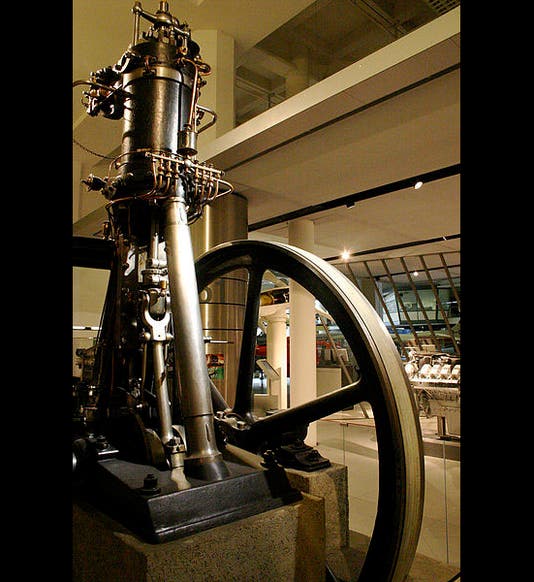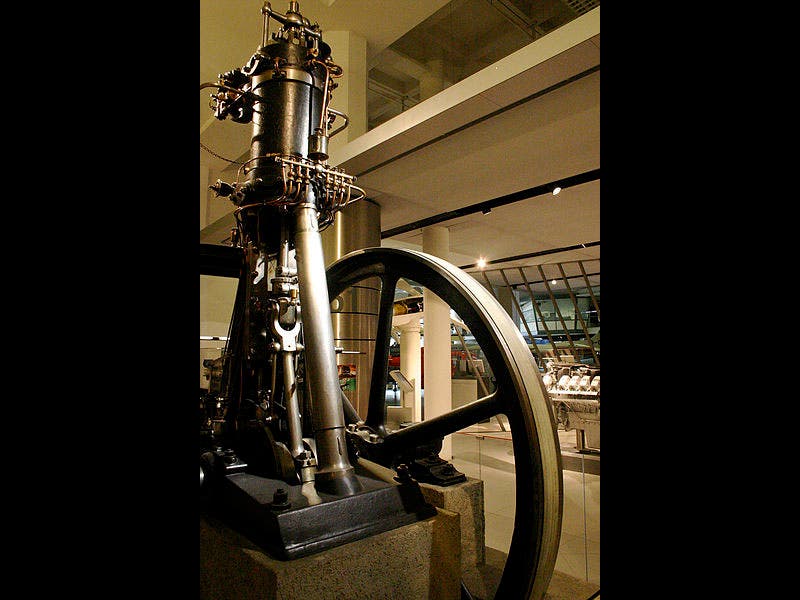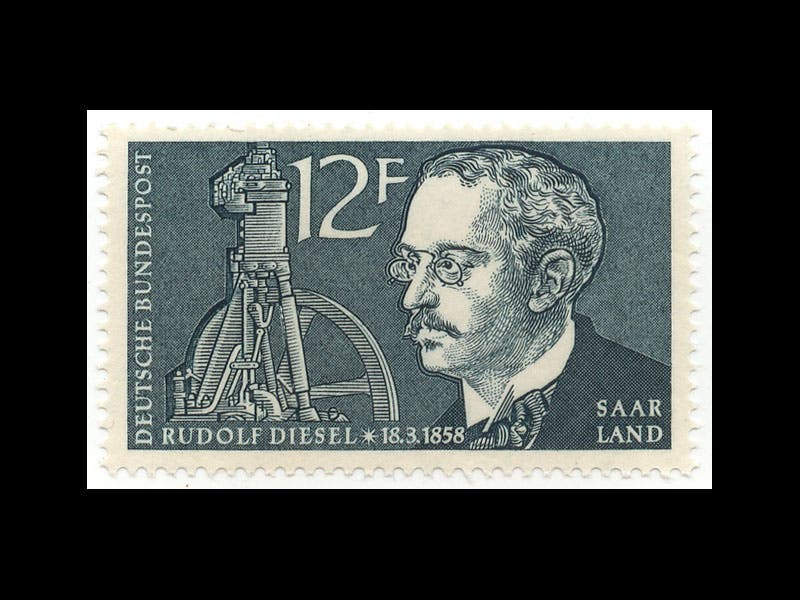Scientist of the Day - Rudolf Diesel
Rudolf Diesel, a German engineer and inventor, was born Mar. 18, 1858. Diesel grew up in the age of the steam engine, which is what we might call an external-combustion engine, where heat, the source of energy, is produced outside the power cylinder. Internal-combustion engines were being developed, using an explosion inside the cylinder for power, but they were incredibly inefficient, as were steam engines (converting only about 10% of the energy used into work). About 1890, Diesel began to work out in his mind a different kind of internal-combustion engine, one where the ignition of fuel and the expansion of the cylinder occurred in such a way as to maintain a nearly constant temperature within. Engineers call this an isothermal reaction, and it has the advantage of being up to 50% efficient. He got a patent for his compression-ignition engine in 1893 and set out trying to make a working model. Here is where he ran into trouble. Because the diesel engine would have no outside source of ignition, but would compress the gases to such a high pressure and temperature that they would ignite spontaneously, the engine had to be exceptionally sturdy and able to withstand incredible forces. And yet, if the engine got too bulky and heavy, it could not be used for mobile engines. Diesel had financial backing from industry, and he had a working engine by 1897. You can see the original model in the Deutsches Museum in Munich (first image). An improved engine was displayed at the Paris World’s Fair in 1900 (second image), where it won the grand prize, and by 1905, Diesel’s engines were taking their place in industrial plants (third image)
It was not until 1908 that the diesel engine became a viable alternative to steam, and that was mainly because Diesel's patent ran out that year and there were no longer any licensing fees to be paid. The ensuring years saw a storm of controversy over whether Diesel had really invented the engine that bore his name. Diesel was quite depressed by all this, and on Sept. 29, 1913, he boarded a steam ferry in Antwerp and then disappeared. His body turned up ten days later in the North Sea, with enough effects to identify it as Diesel’s. Although he left no suicide letter, there were enough other clues to convince most historians that Diesel took his own life. Had he lived another 30 years (a possibility, since he was only 55 when he died), he would have seen his reputation completely refurbished, as he is now universally acknowledged as the inventor of the diesel engine.
The fourth image shows a photo of Diesel taken in 1912, the year before his death, and the last is a 1958 German postage stamp that honors his engine
Dr. William B. Ashworth, Jr., Consultant for the History of Science, Linda Hall Library and Associate Professor, Department of History, University of Missouri-Kansas City. Comments or corrections are welcome; please direct to ashworthw@umkc.edu.











